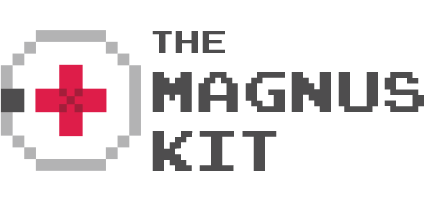Let's Look at: Dark Messiah of Might and Magic
First person cameras are crazy common in games. It might be the most common perspective but despite all of that, there are certain things that are remarkably hard to do in 1st person. Platforming is one of them, and so is any kind of melee combat. Somehow, Dark Messiah of Might and Magic manages to do it. It didn’t make a huge splash when it came out, and it continues to be more of a cult hit than anything, but it deserves a little more of a spotlight than it gets.
Dark Messiah is an action RPG that came out in 2006 for the PC, and later in 2008 for the Xbox 360. In Dark Messiah you play as Sareth, a wizard’s apprentice. After finding the mysterious and magical Shantiri Crystal, you are sent off to deliver the item to an acquaintance of your master. You find out that both wizards are after an artifact called the Skull of Shadows, and you are to help them find it. As you can guess, things don’t go so well, but I won’t spoil any more of the plot. As you complete story sections, you get experience points which can be spent on the three skill trees the game offers (Combat, Magic, and Miscellaneous). The game is fairly straightforward, though there are many hidden areas with bonus items. There are not a huge amount of items and armor to use, so I would not expect a Skyrim like experience, if I were you.
The melee combat in Dark Messiah is dynamic, fast paced, and just plain enjoyable. Unlike most 1st person combat systems, some amount of trial and error is needed to really understand how to beat enemies. Unlike Skyrim or Oblivion, you can’t just mash the attack button and expect everybody to fall over. Enemies will keep blocking if you try to wail on them, and if you time your blocks correctly, you can set them off balance and deliver a flurry of blows. There’s also a really good sense of weight to your and your enemies’ attacks. An odd, but extremely awesome, addition to melee combat is the ability to kick enemies. You can use your kick in the middle of combat to unbalance enemies, knock them off ledges, or into the spiked walls that seem to be everywhere for some reason. There are few things more satisfying than blocking an enemy then kicking them into their partner, making them both fall off a cliff. You can mix melee with magic, stealth, and ranged combat to give yourself a slew of different approaches to every problem, and your quick movement means that combat never feels too slow or too rooted in one place.
The platforming in Dark Messiah is also very well done, despite the 1st person camera. This is helped by the fact that you can actually see your feet, so you have a much better idea of where you’re landing. Sprinting and making a huge leap or climbing across a roof to reach a hidden area gives you a great feeling of momentum and speed. The game was designed around a lot of vertical movement and it’s amazing how non-frustrating it is. Most times when a first person game introduces platforming it just means they’re giving you a section where you can die a bunch without meaning to, but Dark Messiah manages to make it thrilling without being overly unfair. Also, this game has the best utility item ever: the rope arrow. Essentially, you can stick an arrow into anything wooden, and a rope will hang down. You can climb up the rope to reach whatever you need to, and it totally unlocks the space in a unique way. I think a lot of developers usually design linear games in a very planned way, to guide the player through the story in a specific way. It’s very interesting to see them give the player tools to really change how they make it through the levels.
It’s never all roses and puppy dogs though and Dark Messiah is no exception. While you get to visit a bunch of different kinds of environments, the levels are confusingly designed. Most of them are fairly linear, but there are usually a few ways to get to the end, and when you introduce the ability to climb pretty much anything with the rope arrow, you can get turned around pretty easily. There’s not a lot of difference between one sandy temple corridor and another, really. I also think the combat and platforming also would have fit fantastically in a more open world setting, especially with the rope arrow. Something more exploration based would have really suited the characters ability to get pretty much anywhere, rather than forcing you down a bunch of similar corridors. The female characters are also really, really one dimensional. They really don’t have a lot in the way of agency, an arc, or importance, and I feel like that was a real waste. There are two female characters that get some screen time, and they could both have had really interesting backstories given the magical and fantastical world this game is in, but they’re mainly eye candy.
Worth Playing?
Yes.
I would not head into this game if you’re looking for a well fleshed out story, an open world, or a really long game. But, if you’re looking for great melee combat, some fun exploration, and the sort of combat item since Half Life 2’s gravity gun, then yeah, this one is worth your time.




